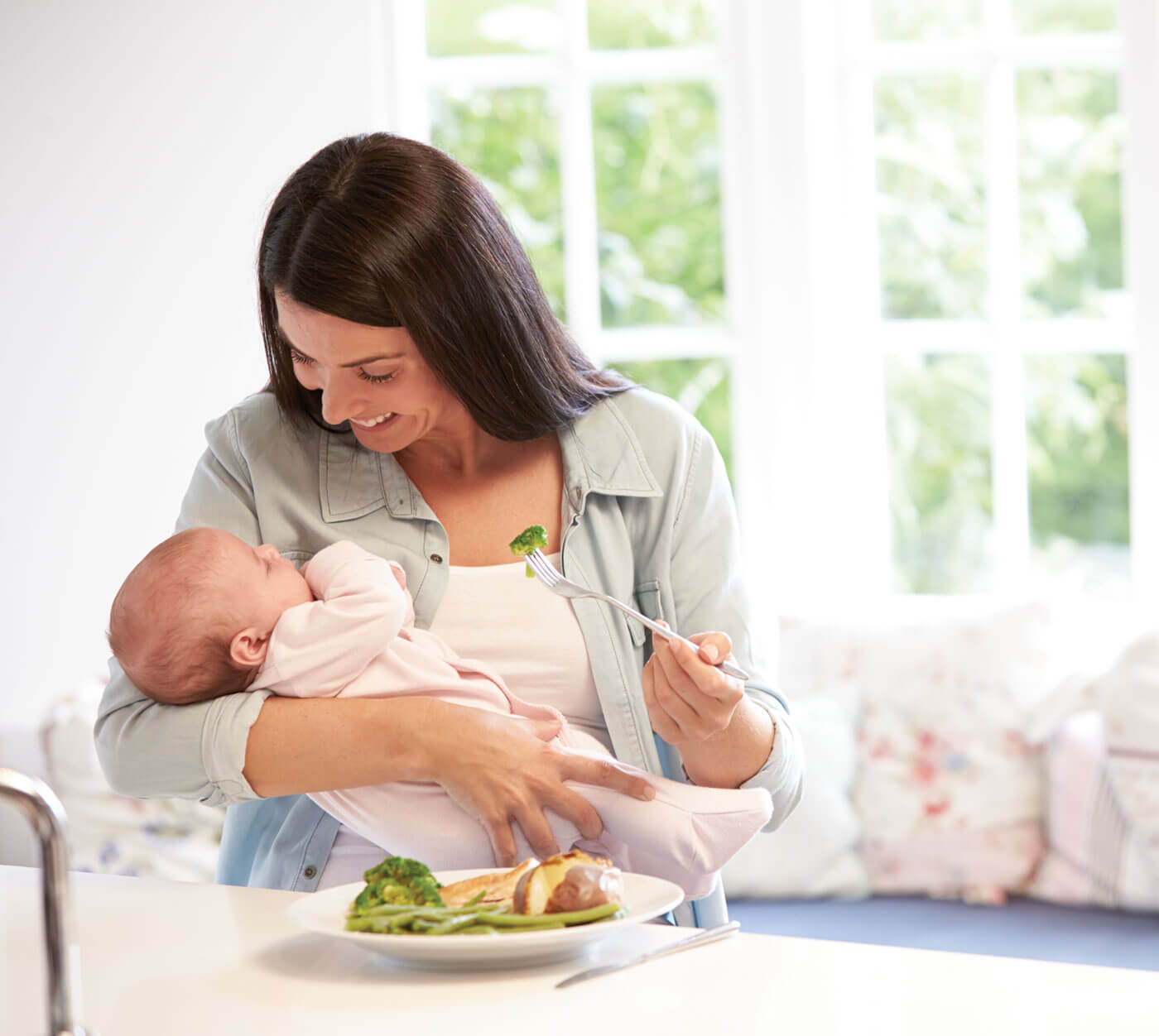Eating after the baby
- Home
- Ellyn Satter
- Prenatal / Postpartum
- Postpartum
- Eating after the baby


How do you go about feeding yourself?
Is that the way you plan to feed your child when he is bigger?
Do you want your child to eat the way you do?
Both mothers and fathers need to be strong and steady to be good parents. If you are hungry or try to go without food, you will be tired, cranky and discouraged.
Before the year is over, your baby will be ready to eat from the table. Start having family meals now, so you are ready when the time comes.

Have meals with food you enjoy. Cook easy and tasty meals.
Plan ahead. Know you will get the next meal—and the next!
Eat both good and good-for-you food. Sneak up on new food and learn to like it!
Eat until you feel satisfied. Stop. Do it again the next meal—and the next!
Trust your body, and give it time to lose its baby weight.
Drink milk. Learn to like milk if you can.
© Ellyn Satter
HAND EXPRESSION
How it works
Use your hand to gently massage and compress your breast to remove milk.
What’s Involved
Average Cost
Free
Side-Lying Hold
This hold is useful when:
Cross-Cradle Hold
This hold is useful when:
Clutch or “Football” Hold
This hold is useful when:
Cradle Hold
This hold is useful when:
Laid-Back Hold
This hold is useful when: